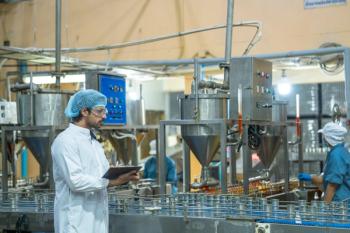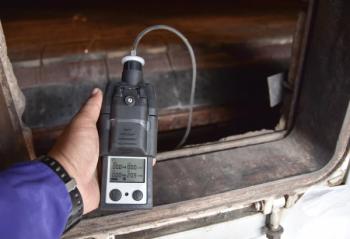
Best of the Week: Wearable Technology, Soil Acidification, Food Safety Analysis
Top articles this week on Spectroscopy covered topics such as soil acidification, wearable technology, and food safety analysis.
This week, Spectroscopy published a variety of articles on the hottest topics in analytical spectroscopy. These news articles cover various industries and a wide range of spectroscopic techniques. Below, we’ve highlighted some of the most popular articles, according to our readers and subscribers. Happy reading!
This article discusses a recent study that saw a team of researchers from RIKEN and The University of Tokyo develop flexible near-infrared organic photodetectors (OPDs) with significant implications for wearable technology. These devices promise enhanced non-invasive biosensing and bio-imaging capabilities, paving the way for more responsive and intelligent wearable applications (1).
A study published in Precision Agriculture found that mid-infrared (MIR) spectroscopy, combined with partial least squares regression (PLSR), can accurately measure soil acidification. This method is particularly relevant as the agriculture industry grapples with climate change. Traditional soil acidity management relies on lime application, but current laboratory methods for measuring soil pH are time-consuming and costly (2). The study, led by Ruby Hume at The University of Adelaide, demonstrated that MIR-PLSR can reliably predict soil pH changes because of lime treatments, showing strong correlation with traditional methods. However, the technique was less accurate for other soil properties like cation exchange capacity (CEC) and aluminum content (2). Despite these limitations, MIR-PLSR presents a faster, more cost-effective approach for soil monitoring, potentially enhancing agricultural productivity and soil health (2). Further refinement of prediction models is needed to improve reliability across all measured soil properties.
A study published in the International Journal of Molecular Science, explores using Raman spectroscopy combined with machine learning to improve the diagnosis of Alzheimer's disease. Traditional diagnostic methods like PET, CT, and CSF analysis are costly and invasive, necessitating better alternatives (3). The research, led by Andreas Seifert, demonstrated that Raman spectroscopy, providing a molecular fingerprint without complex labeling, when paired with machine learning, effectively distinguishes between healthy individuals and those in preclinical stages of Alzheimer's. By analyzing patient samples across different years, the method showed high accuracy and robustness, indicating its potential as a reliable, less invasive diagnostic tool for early Alzheimer’s detection (3).
This article reviews the significant role of Raman spectroscopy in food safety analysis, as examined by Honglin Liu and colleagues from Hefei University. Raman spectroscopy is praised for its rapid, simple, sensitive, and noninvasive attributes, making it suitable for detecting foodborne pathogens, toxic gases in spoiled foods, and monitoring pesticide translocation in plants (4). The review discusses the principles, instrumentation, and practical applications of this technique while highlighting its challenges and future directions, such as reducing costs, improving sensor sensitivity, and integrating with IoT and AI to enhance food safety supervision networks (4).
This study investigated the reliability of near-infrared spectroscopy (NIRS) for measuring muscle oxygenation (SmO2) during cycling. Using a Moxy muscle oximeter, the study evaluated SmO2 in the vastus lateralis muscles of both legs in twelve trained cyclists across three incremental tests (5). Results showed good to excellent reliability (ICC: 0.79-0.92) but significant side differences, suggesting caution when comparing measurements between legs (5). The study highlights the importance of standardizing measurement protocols for accurate SmO2 monitoring in endurance training (5).
References
(1) Workman, Jr., J. Flexible Near-Infrared Photodetectors Pave the Way for Advanced Wearable Technology. Spectroscopy. Available at:
(2) Wetzel, W. Analyzing Soil Acidification Using Mid-Infrared Spectroscopy. Spectroscopy. Available at:
(3) Wetzel, W. Applying Raman Spectroscopy with Machine Learning to Detect Alzheimer’s Disease. Spectroscopy. Available at:
(4) Wetzel, W. Reviewing the Role of Raman Spectroscopy in Food Safety Analysis. Spectroscopy. Available at:
(5) Workman, Jr., J. Wearable Near-Infrared Technology Tested for Monitoring Athletic Performance. Spectroscopy. Available at:
Newsletter
Get essential updates on the latest spectroscopy technologies, regulatory standards, and best practices—subscribe today to Spectroscopy.





